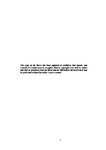GROUND<C>: A METAVERSE LEARNING STRATEGY FOR THE CREATIVE FIELDS
| dc.contributor.supervisor | Phillips, Mike | |
| dc.contributor.author | Ayiter, Elif | |
| dc.contributor.other | Faculty of Arts, Humanities and Business | en_US |
| dc.date.accessioned | 2013-01-17T15:30:33Z | |
| dc.date.available | 2013-01-17T15:30:33Z | |
| dc.date.issued | 2012 | |
| dc.identifier | 390522 | en_US |
| dc.identifier.uri | http://hdl.handle.net/10026.1/1244 | |
| dc.description | An alternative download link for the appendix of the thesis is here: http://www.citrinitas.com/PhD/2012Ayiter390522phd_appendix.zip | en_US |
| dc.description.abstract |
In this thesis I cover the theoretical framework and the practice based implications of bringing the fundamental principles of a cybernetic art educational strategy, the Groundcourse, which was developed and taught during the 1960’s in England by Roy Ascott, into the virtual, three dimensional builder’s world of the metaverse; to be implemented there as a non-institutional, voluntary, self-directed, adult oriented learning system for avatars – one which is expected to be taught by avatar instructors who will formulate the specifics of their curriculum and their methods based upon the cardinal tenets of the Groundcourse, which have been summarized by Roy Ascott as a flexible structure, “within which everything can find its place, and every individual his way,” which would give dimension and substance to the will to create and to change. In order to be able to set the groundwork for the adaptation of the Groundcourse’s principles to my model I have conducted literature reviews in experiential learning theories, with an emphasis on self-directed learning; as well as cybernetic learning. These I have combined with a survey of play theory and virtual world studies, particularly those focusing upon the avatar and metaverse creativity. From all of these I have woven together a foundation which I have combined with a visual documentation which may serve as case studies for my proposal. The new knowledge embodied through this thesis is a learning system for the creative fields that is designed specifically for the residents of online virtual worlds, and yet has its foundations in an earlier, well established and well regarded model. | en_US |
| dc.language.iso | en | en_US |
| dc.publisher | University of Plymouth | en_US |
| dc.subject | Creativity | en_US |
| dc.subject | Roy Ascott | |
| dc.subject | Groundcourse | |
| dc.subject | Learning | |
| dc.subject | Second Life | |
| dc.subject | 3D Virtual Worlds | |
| dc.subject | Metaverse | |
| dc.subject | Avatar | |
| dc.subject | Play | |
| dc.title | GROUND<C>: A METAVERSE LEARNING STRATEGY FOR THE CREATIVE FIELDS | en_US |
| dc.type | Thesis | |
| plymouth.version | Full version | en_US |
| dc.identifier.doi | http://dx.doi.org/10.24382/4239 |
Files in this item
This item appears in the following Collection(s)
-
01 Research Theses Main Collection
Research Theses Main


